Glossary of Terms
A handy reference to terms used in our videos
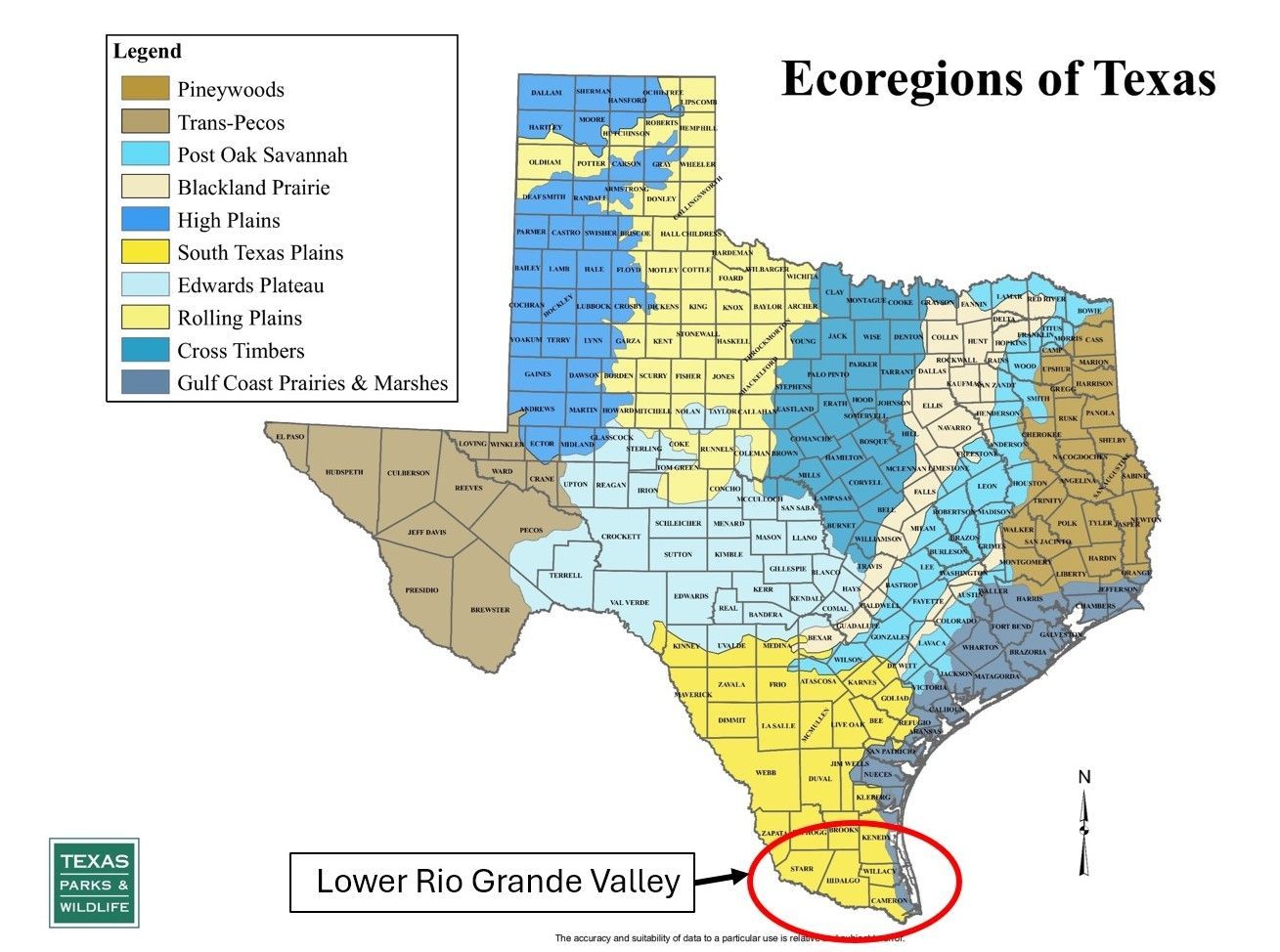
Habitat Types in the LRGV
- Tamaulipan Thorn Scrub: The primary habitat of the South Texas Brushlands ecoregion, made up of thorny shrubs, small trees, grasses, and cacti. Dominant species include Honey Mesquite, Blackbrush Acacia, and Prickly Pear.
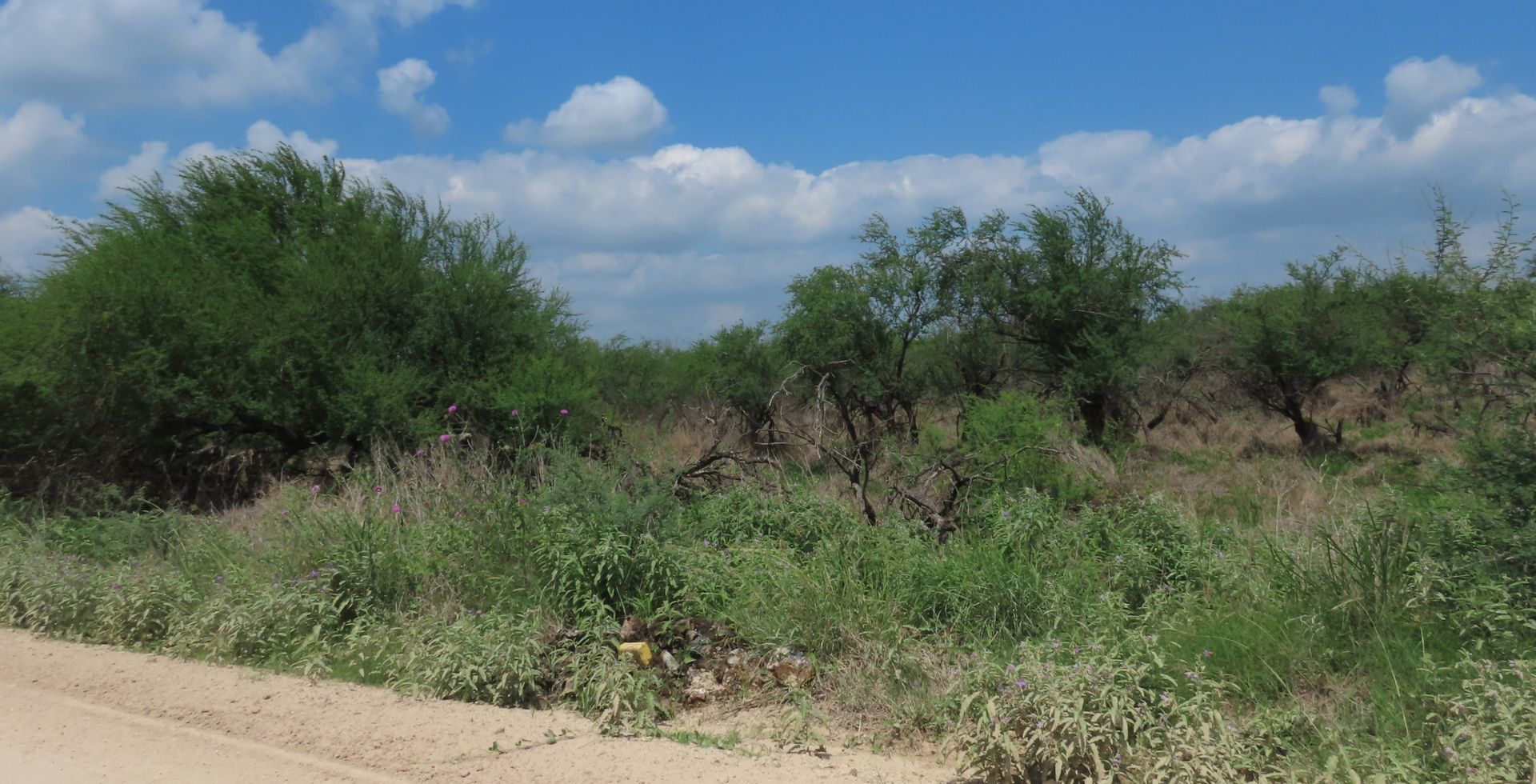
- Wetlands: Includes resacas (oxbow lakes), reservoirs, managed freshwater wetlands, alkaline lakes, and coastal wetlands.
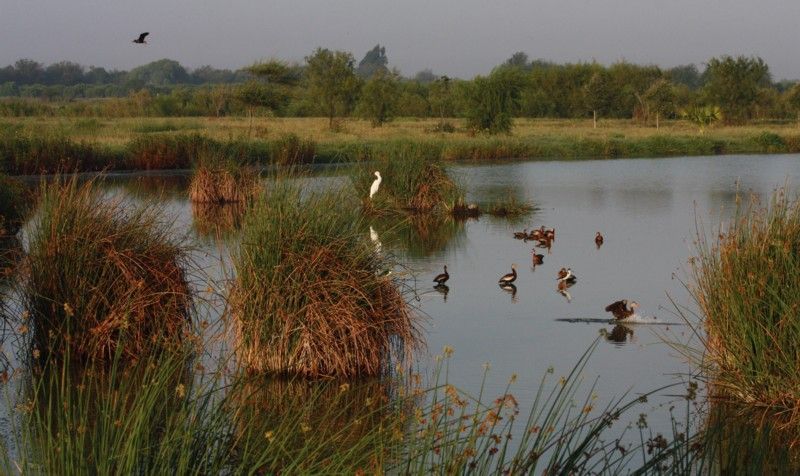
- Riparian: Woodlands that are associated with rivers and wetlands, especially the Rio Grande. Predominant trees include Cedar Elm, Sugar Hackberry, Anacua, and various species of willow. The Sabal Palm is also a riparian specialist.
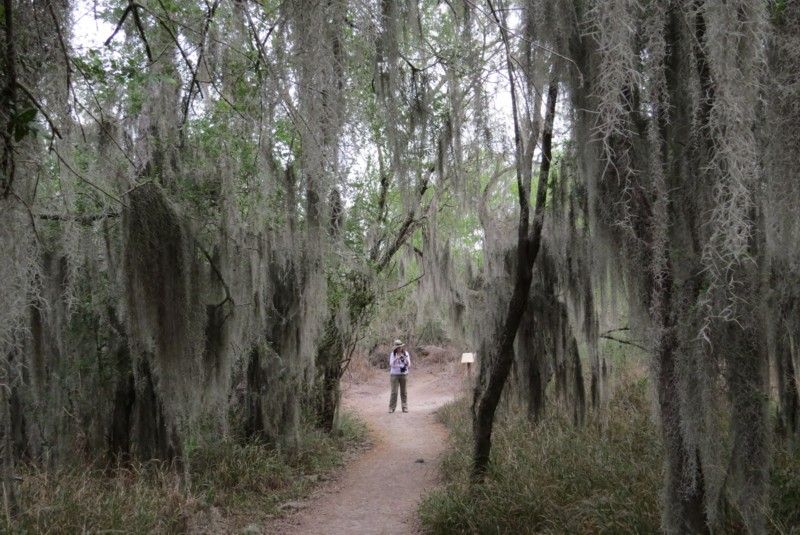
- Coastal Habitats: includes beaches, mangroves, and estuaries.
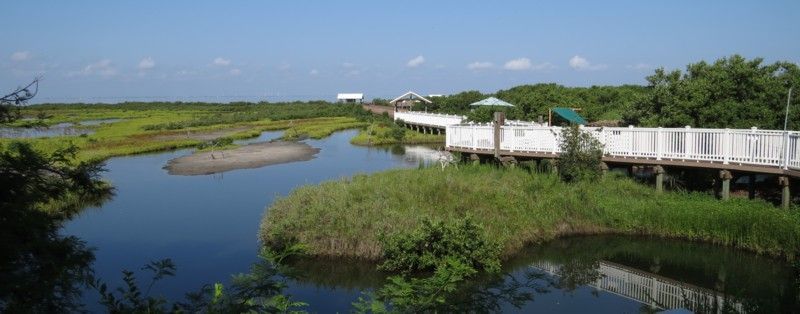
- Grasslands: Includes extensive Coastal Prairie habitat, along with patches of savannah within thornscrub habitats. Often includes cactus patches.

- Disturbed Areas: Includes agricultural areas and vacant lots where native habitat has been cleared.

Some terms applicable to all animals:
- Conspecific – two species that were at one time considered one species.
- Feral – a species that either escaped from captivity or was purposely released into the wild, and has established a breeding population.
- Genus – Taxonomically, a group of species within a family. For instance, the Green Jay is in the family Corvidae (crows and jays), genus Cyanocorax, species Cyanocorax yncas.
- Hybrid – the offspring of two similar species
- Lump – the combining of two species into one, and are now considered “conspecific” (e.g., in Costa Rica, Cherrie's and Passerini's Tanagers have been "lumped" into one species: Scarlet-rumped Tanager).
- Split – The elevation of a race of a particular species to full species status (e.g., the “liliana” race of the Eastern Meadowlark has been “split”, and is now known as Chihuahuan Meadowlark).
Some terms applicable to birds:
- Dawn Song – a song type primarily given before and/or shortly after sunrise, primarily by flycatchers.
- Fledgling – a baby bird that has left the nest. Also “fledged”, having left the nest.
- Gular pouch – the loose, bare skin around the chin and throat of cormorants, pelicans, Anhingas, and frigatebirds.
- Kettle – a large flock of birds (usually raptors and other large, soaring birds) taking advantage of a thermal to circle high in the sky. The birds then glide down to the next thermal and start the process over again.
- Morph – Color variation within a species, most commonly “light” and “dark” (e.g., “Blue” Goose is the dark morph of the Snow Goose).
- Myiarchus – a genus of Tyrant Flycatchers (Tyrannidae) which includes the Great Crested, Brown-crested, Ash-throated, and Dusky-capped Flycatchers.
- Raptor – bird of prey, usually applied to hawks, eagles, and falcons as opposed to owls.
- Skylarking – a display by some songbirds as they sing while flying up into the sky, then returning to earth.
- Staging Area – An area where birds congregate, often by the hundreds, before heading to roost.
- Subadult – halfway between immature and adult plumage, where the bird is taking on more adult-like characteristics.
Some terms applicable to butterflies and moths (see also the diagram on our Moth Page here):
- Abdomen – the largest of the three sections of an insect’s body, the other two being the head and the thorax.
- Apex – the end of the forewing/hindwing.
- Basal – the wing section closest to the bug’s body.
- Cell-end bar – a contrasting bar that sits perpendicular to the edge of the forewing.
- Distal – the wing section furthest from the bug’s body.
- Dorsal – the upperside of a butterfly or moth’s wings
- Eyespot – spots on a butterfly’s wing (usually along the margin) that resemble eyes, designed to fool predators into attacking the tail end rather than the head.
- Flocked – Patterning on a butterfly’s ventral side that gives a dusty or powdery appearance.
- Fringe – the outer edge of the wing.
- Hindwing Cell – a small portion of the hindwing that is formed by the intersection of the veins and often has a distinguishing mark or spot.
- Lepidopterist – one who studies butterflies and moths
- Marginal band – the band closest to the margin, but not flush with the edge of the wing.
- Median band – the band crossing the middle section of the hindwing and/or forewing. The term “median” can also apply to spots and streaks.
- Mudding – the practice of drawing nutrients from the soil. Often many butterflies of several species will congregate on a wet spot (or even dung) in large “mudding parties”.
- Pierid – any of several members of the family Pieridae (Whites, Yellows, and Sulphurs)
- PM line/band – Post-median line or band that sits between the median band and the marginal area.
- Skirt – the effect of the flaring hindwings of members of the Swallowtail family in flight (while the forewings are in constant motion).
- Summer/wet Season Form - a wing pattern that differs significantly from that of the winter/dry season form that is usually brighter.
- Ventral – the underside of a butterfly or moth’s wings
- Winter/dry Season Form – a wing pattern that differs significantly from that of the summer/wet season form that is usually darker and more cryptic.
